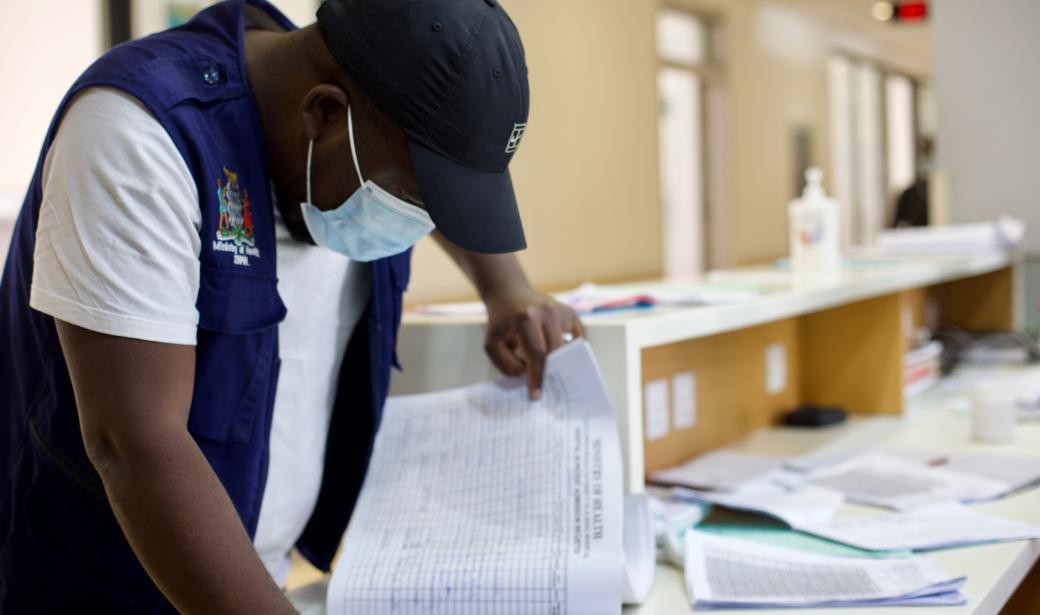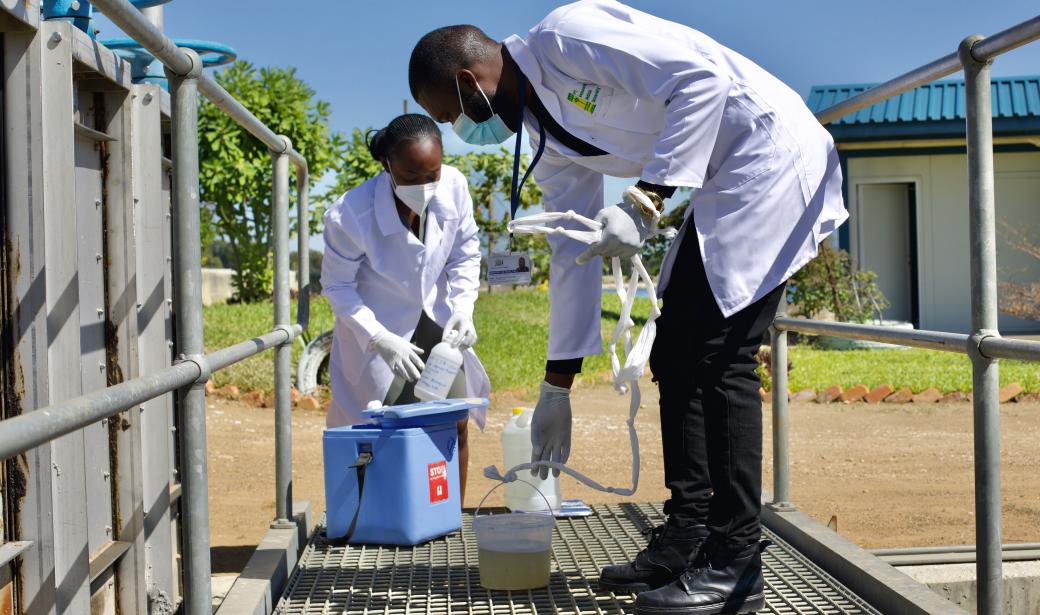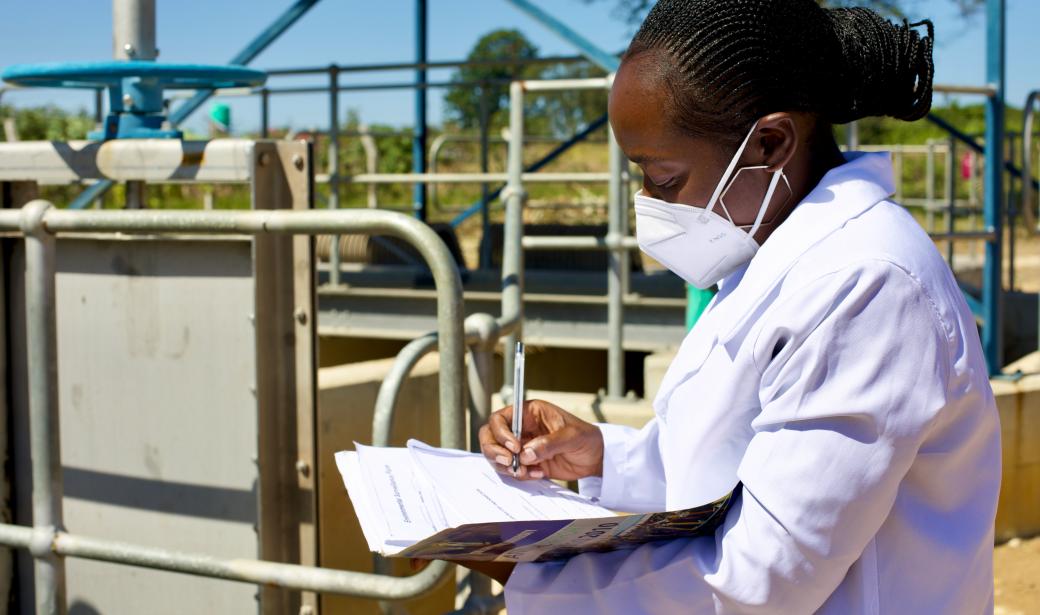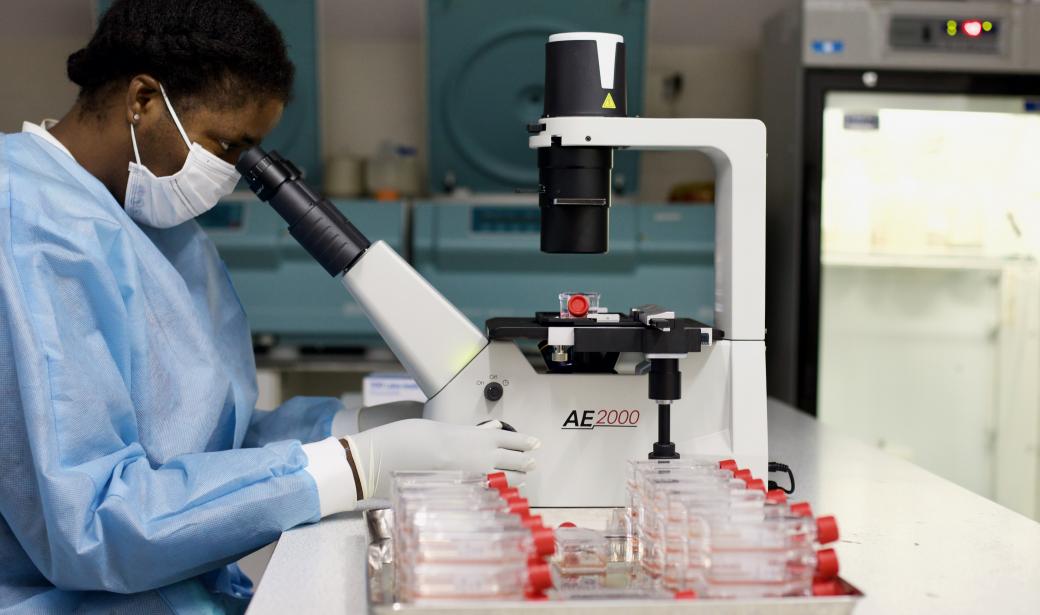Lusaka – Environmental surveillance teams across Zambia are instrumental to the country’s polio eradication programme. Since the outbreak of wild poliovirus in Malawi in February 2022, they have stepped up efforts for early detection as five countries in south-eastern Africa bolster the drive to vaccinate children and halt the virus.
“My four-year-old son has paralysis due to complications at birth” says Francis Mbulo, Surveillance Officer at Lusaka Provincial Health Office, “when I do check-ups at children’s hospitals, I can usually distinguish AFP in a heartbeat.”
Acute Flaccid Paralysis, or AFP, presents itself in young children as a weakness in the limbs or neck, facial droop, difficulty swallowing or slurred speech. The syndrome is brought on by a number of causes including severe malaria, meningitis or tick bites. But it’s also one of the key symptoms of poliovirus, which causes paralysis by attacking the central nervous system.
AFP surveillance is the gold standard for poliovirus identification, together with the detection of poliovirus in sewage waters, or environmental surveillance. It is essential to use all the tools in the box. Zambia is stepping up the polio fight as southern African countries ramp up response following an outbreak of wild poliovirus type 1 in Malawi and Mozambique.
Acute Flaccid Paralysis, or AFP, presents itself in young children as a weakness in the limbs or neck, facial droop, difficulty swallowing or slurred speech. The syndrome is brought on by a number of causes including severe malaria, meningitis or tick bites. But it’s also one of the key symptoms of poliovirus, which causes paralysis by attacking the central nervous system.
AFP surveillance is the gold standard for poliovirus identification, together with the detection of poliovirus in sewage waters, or environmental surveillance. It is essential to use all the tools in the box. Zambia is stepping up the polio fight as southern African countries ramp up response following an outbreak of wild poliovirus type 1 in Malawi and Mozambique.
Mbulo and a team member stop off at Levy Mwanawasa University Teaching Hospital’s paediatric ward, a brand-new facility, to check diagnosis records for polio. “We pick up around 10 cases per year in the district. We found one last week and collected a stool sample for analysis,” Mbulo says. While polio surveillance is by far the most effective for detection, it quickly becomes resource intensive in high population areas like Lusaka.
This is where environmental surveillance can help.
This is where environmental surveillance can help.
“The smell is strong… but you get used to it,” says Mbulo. The team is at Kaunda Square Waste Stabilisation Ponds, which has capacity to treat used waters for over 150 000 of Lusaka’s residents.
The team members wear protective clothing and prepare equipment for a sample collection: a bucket and rope, a bottle, a cooler box with ice packs, a thermometer and disinfectant solution are necessary for the operation.
Mbulo’s team started sampling twice a month during in 2019 during an outbreak of vaccine-derived poliovirus type 2. They've now reduced to once a month as is the standard. Some countries adopt systematic environmental surveillance providing vital information on polio. The more regular the sampling, the more reliable the data.
The team members wear protective clothing and prepare equipment for a sample collection: a bucket and rope, a bottle, a cooler box with ice packs, a thermometer and disinfectant solution are necessary for the operation.
Mbulo’s team started sampling twice a month during in 2019 during an outbreak of vaccine-derived poliovirus type 2. They've now reduced to once a month as is the standard. Some countries adopt systematic environmental surveillance providing vital information on polio. The more regular the sampling, the more reliable the data.
“Each site has an optimal collection time depending on the sewage flow" says Bornface, one of the surveillance team members.
“At Kaunda square, it's 9.30-10am”. Collection times are identified by teams from World Health Organisation in Zambia and vary according to proximity of houses and the peak hours of sewage flow. Some sites may also be problematic because of chemical pollution. “We’re particularly careful during the rainy season. The water becomes too diluted so you shouldn’t collect samples if it’s rained in the past hour,” says Bornface.
“At Kaunda square, it's 9.30-10am”. Collection times are identified by teams from World Health Organisation in Zambia and vary according to proximity of houses and the peak hours of sewage flow. Some sites may also be problematic because of chemical pollution. “We’re particularly careful during the rainy season. The water becomes too diluted so you shouldn’t collect samples if it’s rained in the past hour,” says Bornface.
The sewage water is poured into a bottle which is sealed, disinfected and put into a cooler box destined to the virology lab.
Mobilizing a team of three is essential to avoid cross-contamination. "I collect the sample while Mulenga (another team member) prepares the cooler box and fills in the form" says Bornface.
Bornface and Mulenga both come from Kitwe, an industrial mining town in Zambia’s Copperbelt region. They studied environmental health technology together and are now working together for the polio programme in Lusaka.
Mobilizing a team of three is essential to avoid cross-contamination. "I collect the sample while Mulenga (another team member) prepares the cooler box and fills in the form" says Bornface.
Bornface and Mulenga both come from Kitwe, an industrial mining town in Zambia’s Copperbelt region. They studied environmental health technology together and are now working together for the polio programme in Lusaka.
"One of the only (few) times we've had a sample rejected was because of a shortage of cooler boxes,” says Mulenga. “That day, we only had one to cover all the sites. As a result of squeezing the four bottles into one box, a leakage occurred during transportation.”
With a Cholera outbreak announced last April, COVID-19, and a number of immunization programmes underway, teams have been competing for resources such as equipment and transport.
With a Cholera outbreak announced last April, COVID-19, and a number of immunization programmes underway, teams have been competing for resources such as equipment and transport.
Mulenga fills in the environmental surveillance form for the virology laboratory. She notes identification details for the sample such as atmospheric temperature, time and date. The laboratory can tick the ‘poor’ sample box if information on the form doesn't exactly match the bottle.
Mulenga was first deployed to Lusaka for the 2018 cholera outbreak which killed 114 people in Zambia. The district was so affected that health workers were recruited from all over the country.
“It was the most hectic seven months of my life. Cholera spreads so fast that no matter the time, you have to be proactive. I was contact tracing, disinfecting houses, sanitary facilities, but also bodies. The worst was when we lost children. Those memories don't go away,” says Mulenga who now wants to make a difference through the polio programme.
Mulenga was first deployed to Lusaka for the 2018 cholera outbreak which killed 114 people in Zambia. The district was so affected that health workers were recruited from all over the country.
“It was the most hectic seven months of my life. Cholera spreads so fast that no matter the time, you have to be proactive. I was contact tracing, disinfecting houses, sanitary facilities, but also bodies. The worst was when we lost children. Those memories don't go away,” says Mulenga who now wants to make a difference through the polio programme.
Nosiku Sitali Muknatu, Environmental Surveillance Technical Supervisor, examines samples. The concentration of poliovirus is lower in environmental sewage than stool samples, but Muknatu is still able to determine the origin of a virus strain as wild or vaccine-derived.
Vaccine-derived poliovirus can occur when a strain of the weakened poliovirus found in the oral polio vaccine changes over time and starts behaving like the wild virus. While it is rare, it is increasingly affecting communities with low immunization rates. The work performed by Muknatu is critical if we are to know which form of the virus is circulating.
The double-pronged approach of AFP and environmental surveillance remains essential to Polio eradication. In Zambia, as of 2018, only 28% of rural households had access to sanitation services and just over half to clean water. And new challenges are yet to come, with climate change already causing water shortages in the country’ southern regions.
“I just never want to see children lose their lives to preventable diseases again,” says Mulenga as she leaves the sewage plant, removing her protective clothing and untying her hair.
Vaccine-derived poliovirus can occur when a strain of the weakened poliovirus found in the oral polio vaccine changes over time and starts behaving like the wild virus. While it is rare, it is increasingly affecting communities with low immunization rates. The work performed by Muknatu is critical if we are to know which form of the virus is circulating.
The double-pronged approach of AFP and environmental surveillance remains essential to Polio eradication. In Zambia, as of 2018, only 28% of rural households had access to sanitation services and just over half to clean water. And new challenges are yet to come, with climate change already causing water shortages in the country’ southern regions.
“I just never want to see children lose their lives to preventable diseases again,” says Mulenga as she leaves the sewage plant, removing her protective clothing and untying her hair.
For Additional Information or to Request Interviews, Please contact:
Collins Boakye-Agyemang
Communications and marketing officer
Tel: + 242 06 520 65 65 (WhatsApp)
Email: boakyeagyemangc [at] who.int (boakyeagyemangc[at]who[dot]int)










